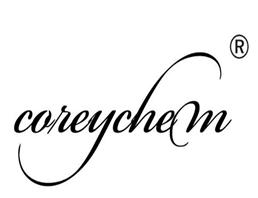
1,1-Dimethylbiguanide hydrochloride
| Price | $1 |
| Package | 1KG |
| Min. Order: | 1G |
| Supply Ability: | 100KG |
| Update Time: | 2019-07-06 |
Product Details
| Product Name: 1,1-Dimethylbiguanide hydrochloride | CAS No.: 1115-70-4 |
| Min. Order: 1G | Purity: 98% |
| Supply Ability: 100KG | Release date: 2019/07/06 |
AD68
| 1,1-Dimethylbiguanide hydrochloride Basic information |
| Oral hypoglycemic agents Adverse effects and precautions Chemical Properties Application Production method |
| Product Name: | 1,1-Dimethylbiguanide hydrochloride |
| Synonyms: | gliformin;haurymellin;meguan;n,n-dimethylbiguanidehydrochloride;n,n-dimethyl-imidodicarbonimidicdiamidmonohydrochloride;1,1-DIMETHYLBIGUANIDE HYDROCHLORIDE;METFORMIN HCL;METFORMIN HYDROCHLORIDE |
| CAS: | 1115-70-4 |
| MF: | C4H12ClN5 |
| MW: | 165.62 |
| EINECS: | 214-230-6 |
| Product Categories: | Intermediates & Fine Chemicals;Pharmaceuticals;API's;Miscellaneous Compounds;Aerobic Glycolysis (the Warburg Effect);Cancer Metabolism;Inhibitors and Activators of the AMPK pathway;Inhibitors of Aerobic Glycolysis (the Warburg Effect);Building Blocks;Cancer Research;Chemical Synthesis;Guanidines;Nitrogen Compounds;Organic Building Blocks;API;FORTAMET;Diabetes Research;Inhibitors |
| Mol File: | 1115-70-4.mol |
 |
|
| 1,1-Dimethylbiguanide hydrochloride Chemical Properties |
| Melting point | 223-226 °C(lit.) |
| Fp | 9℃ |
| storage temp. | Store at RT |
| form | Powder |
| color | White |
| Water Solubility | Soluble in water (50 mg/ml), ethanol, and DMSO (50 mM). |
| λmax | 233nm(H2O)(lit.) |
| Merck | 14,5938 |
| CAS DataBase Reference | 1115-70-4(CAS DataBase Reference) |
| Safety Information |
| Hazard Codes | Xn,T,F |
| Risk Statements | 22-36/38-39/23/24/25-23/24/25-11 |
| Safety Statements | 26-36-45-36/37-16-7 |
| RIDADR | UN1230 - class 3 - PG 2 - Methanol, solution |
| WGK Germany | 3 |
| RTECS | DU1800000 |
| Hazardous Substances Data | 1115-70-4(Hazardous Substances Data) |
| Toxicity | LD50 in rats (mg/kg): 1000 orally, 300 s.c. (Rx Bulletin) |
| 1,1-Dimethylbiguanide hydrochloride Usage And Synthesis |
| Oral hypoglycemic agents | Metformin hydrochloride is a biguanide oral hypoglycemic agent , also known as Glucophage, its hypoglycemic effect is weaker than phenformin, the main role is to reduce the glucagon secretion of A cells ,and to promote the conversion of glucose to glycogen, its characteristic effect including that it does not stimulate pancreatic β-cells to secrete insulin . The follows are hypoglycemic mechanisms: 1. Increasing the sensitivity of peripheral tissues to insulin, increase insulin-mediated glucose utilization. 2. Increasing glucose utilization of non-insulin-dependent tissues, such as brain, blood cells, kidney medulla, intestine, skin and so on. 3. Inhibiting hepatic gluconeogenesis effect , reducing hepatic glucose output. 4. Inhibiting glucose uptake by intestinal cells. 5. Inhibiting the biosynthesis and storage of cholesterol , lowering blood triglycerides and total cholesterol levels. Metformin hydrochloride is clinically used for the treatment of type Ⅱ diabetes patients who are not satisfied with simple diet control, especially patients with obesity and hyperinsulinemia, usage of this drug not only displays no hypoglycemic effect, but also there may be weight loss and hyperinsulinemia effect. For some patients with poor efficacy of sulfonylurea ,it may be effective, if it is used with hypoglycemic drugs including sulfonylurea, intestinal glucosidase inhibitors or thiazolidinediones, the results are better than used alone. It can also be used in patients with insulin therapy to reduce the amount of insulin. At present, domestic manufacturer mainly include the American Shanghai Squibb Pharmaceutical Co., Ltd . |
| Adverse effects and precautions | Biguanide oral hypoglycemic agents can increase glucose utilization of surrounding tissues and inhibit the intestinal absorption of glucose, and inhibit glycogen gluconeogenesis and hepatic glucose output,it is mainly applied to obesity, dyslipidemia, type II diabetes patients. It almost has no hypoglycemic effect for normal persons , 2 to 3 hours after taking for diabetes patients ,glucose decreases significantly. Commonly used oral hypoglycemic agents include phenformin and metformin hydrochloride. The incidence of adverse effects of metformin hydrochloride is higher than tolbutamide , common gastrointestinal reactions are anorexia, nausea, vomiting, abdominal pain, diarrhea, occasional metallic taste in the mouth, bad breath, nausea, loss of appetite and diarrhea and other gastrointestinal reactions, sometimes hypoglycemia is visible . Since the biguanide drugs enhance sugar anaerobic glycolysis, and inhibit glycogen generation, small number of patients may suffer with ketosis or lactic acidosis, which should be particularly vigilant, but metformin effect is weak , adverse reactions are only 1/50 of other biguanides, and it has rapid clearance, there are no accumulation in the liver, it rarely induces lactic acidosis, sometimes there is mild increase in blood lactate. patients with heart, liver, kidney diseases are prone to these adverse reactions, diabetes patients with these types of complications are hanged. It can reduce the absorption of vitamin B12, but it seldom causes anemia. The following cases are contraindications: 1. Pregnant and lactating women, children under 10 years of age, 80 years of age or older. 2. Diabetic ketoacidosis, diabetic hyperglycemic hyperosmolar syndrome, diabetes lactic acidosis. 3. Severe liver and kidney dysfunction, blood urea nitrogen and creatinine higher than normal, hypovolemic shock, heart failure, AMI, in vivo hypoxic condition such as heart failure, pulmonary insufficiency, or any systemic hypoxia circumstances and other serious heart and lung diseases. 4. Severe infection or trauma, major surgery, clinical hypotension , hypoxia and so on. 5. Complications with severe diabetic nephropathy and retinopathy. When there are symptoms,the drug should be immediately discontinued; cimetidine can reduce the renal excretion of metformin hydrochloride, agar types can reduce the absorption of metformin, patients must check liver and kidney function and cardiac ketones regularly. 6. Alcoholics, vitamin B12 and folate deficiency which are not corrected. |
| Chemical Properties | White crystal or crystalline powder. Melting point 232 ℃ (218-220 ℃). Soluble in water, dissolved in methanol, slightly soluble in ethanol, insoluble in ether and chloroform. Odorless, bitter taste. |
| Application |
|
| Production method | After the salifying of dimethylamine and the reaction with dicyandiamide , the product is derived. |
| Chemical Properties | Crystalline Solid |
| Uses | An oral hypoglycemic agent |
| Uses | Anti-diabetic and anti-cancer activity |
| Definition | ChEBI: A hydrochloride resulting from the reaction of metformin with one molar equivalent of hydrogen chloride. |
| Biological Activity | Antidiabetic agent; lowers plasma glucose levels and improves insulin sensitivity. Inhibits hepatic gluconeogenesis via activation of the LKB1/AMPK pathway. Displays antiproliferative effects in cancer cell lines. |
Company Profile Introduction
Established in 2014,Career Henan Chemical Co. is a manufacturerspecializing in the sale of fine chemicals.
Mainly deals in the sales of:
Pharmaceutical intermediates
OLED intermediates:
Pharmaceutical intermediates;
OLED intermediates;
You may like
Recommended supplier
| Product name | Price | Suppliers | Update time | |
|---|---|---|---|---|
| $77.00/500mg |
VIP6Y
|
TargetMol Chemicals Inc.
|
2026-01-13 | |
| $77.00/500mg |
VIP4Y
|
TargetMol Chemicals Inc.
|
2026-01-13 | |
| $0.00/25kg |
VIP5Y
|
WUHAN FORTUNA CHEMICAL CO., LTD
|
2025-11-24 | |
| $5.00/1KG |
VIP1Y
|
Wuhan JiyunZen Tech Co., Ltd.
|
2025-05-07 | |
| $/ |
VIP5Y
|
RongNa Biotechnology Co.,Ltd
|
2025-04-29 | |
| $77.00/500mg |
VIP2Y
|
TargetMol Chemicals Inc.
|
2025-04-27 | |
| $0.00/25kg |
VIP2Y
|
Shaanxi Dideu New Materials Co. Ltd
|
2025-02-15 | |
| $10.00/1kg |
VIP7Y
|
Hebei Chuanghai Biotechnology Co., Ltd
|
2024-11-11 | |
| $10.50/1KG |
VIP5Y
|
Hebei Chuanghai Biotechnology Co,.LTD
|
2024-08-20 | |
| $980.00/1kg |
VIP2Y
|
HEBEI SHENGSUAN CHEMICAL INDUSTRY CO.,LTD
|
2024-08-15 |
- Since: 2014-12-17
- Address: Zhengzhou High tech Zone, Henan Province, China
INQUIRY
杨俊青
sales@coreychem.com
sales@coreychem.com







 China
China